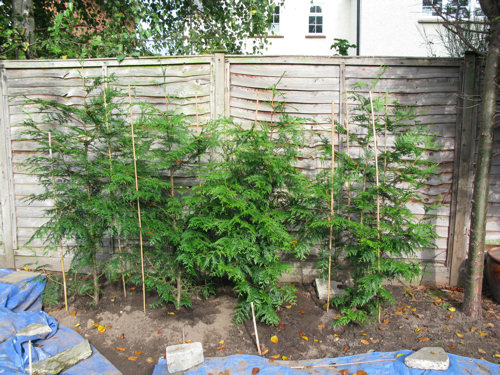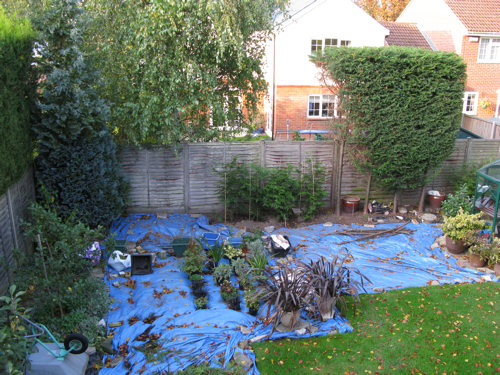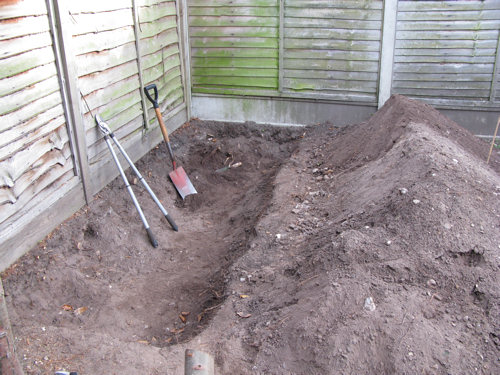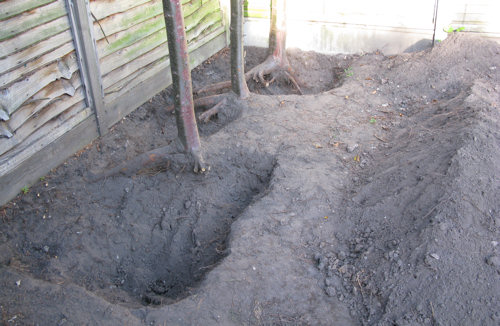Hedges are still hard work
We had lots and lots of rain but now it’s time for a dry spell, so I finished off planting the hedge.
I am now much better at planting big trees than I was last week. It was still hard work, but much less effort than last time. Yesterday I planted one tree in the morning, and the other two in the afternoon. I gave them a bag of compost each, and borrowed some soil from elsewhere to fill the hole. It is now apparent that I am going to need a lot of soil to get the level back up in this area. I need to take it from some area of the garden that isn’t relevant to the next phase of the work.
The Hedge Part 1 has grown well.
As you can see, both hedges are just beginning to reach beyond the top of the fence. I found it strange that the trees kept in pots should grow just as fast as the trees planted in open ground. However, the trees in the pots are not yet pot-bound, so perhaps the restriction of the roots hasn’t had any effect yet. Also, the trees in pots probably got more light than the ones behind the greenhouse, which are hemmed in by the fences and the bay tree. And the trees in pots may have got more water, although I was careful to water the hedge whenever it was hot and dry for a few days at a time. I fed the trees in pots more than the hedge too.
These thoughts about the growth rate are not just of academic interest; I have to decide what to do about the middle section of the hedge. Although I would like to let the replacement trees grow a little bigger before I remove the middle four Leylandii, I am afraid I will not be able to plant them if they are 7 ft tall. I am thinking that the best thing to do would be to remove the Leylandii in March and then plant the six replacement thuja as soon as the ground is warm enough, before they have had a chance to grow any more.
I also now have to face my miscalculation about the number of thuja needed. You can see from the picture below that there is a big gap between the left-hand edge of the hedge and the blue conifer.
I think I need another thuja to the left of the hedge. I thought about using one of my mature specimens and buying a small replacement to go in the middle section, but I think a tree that is much smaller than the rest would stand a better chance if placed at the end of a hedge rather than in the middle. So I think I will buy a replacement and put it in this autumn if I can get it soon enough.
The heavy rain and winds have not been good for my sedums. Poor things.

















